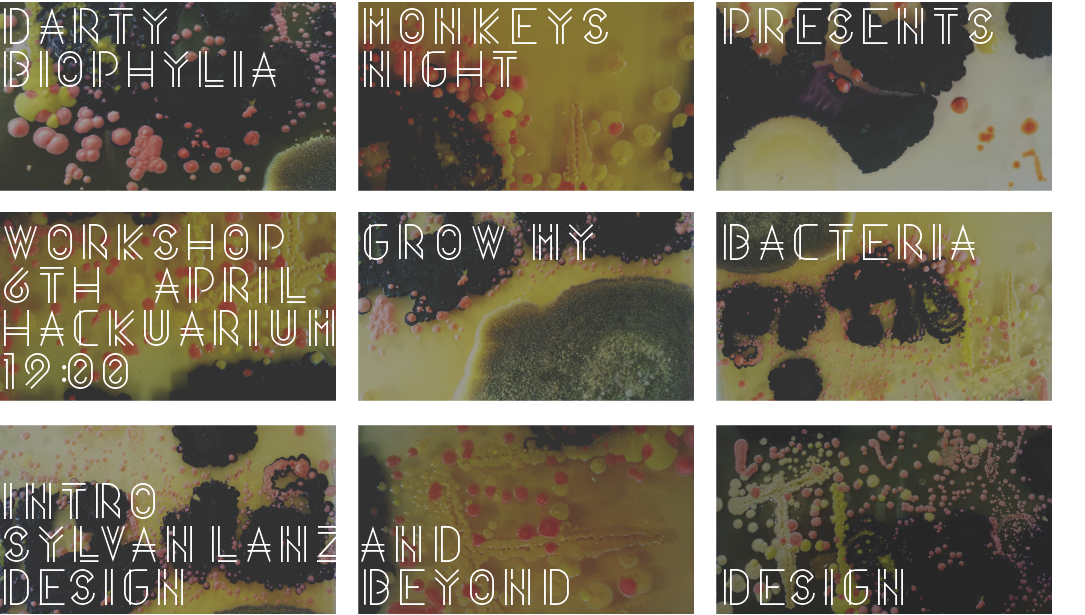Difference between revisions of "Openhackuarium vol. 92"
| Line 35: | Line 35: | ||
*Put the lids back on the Petri dishes, label them, tape them closed and place them upside down in your make-do incubator (if you have one) for 1 to 2 days. If you don’t have an incubator, leave the plates at room temperature for 3-5 days. | *Put the lids back on the Petri dishes, label them, tape them closed and place them upside down in your make-do incubator (if you have one) for 1 to 2 days. If you don’t have an incubator, leave the plates at room temperature for 3-5 days. | ||
*Although your grown bacteria colonies and fungi is likely to be harmless, just as a precaution, do not open your sealed Petri dishes. Dispose of the entire sealed plate in the bin. | *Although your grown bacteria colonies and fungi is likely to be harmless, just as a precaution, do not open your sealed Petri dishes. Dispose of the entire sealed plate in the bin. | ||
| + | <br> | ||
=Who= | =Who= | ||
Revision as of 19:15, 5 April 2016
Darty Monkeys: Biofilia Night #1
What
Introduction to: Silvan Lanz Visual Research (10min) and "Design beyond Design"(10min) Workshop: "Grow my bacteria" (30min)
Ingredients
CAUTION This science activity involves the use of boiling water ;) Although your grown bacteria colonies and fungi is likely to be harmless, just as a precaution, do not open your sealed Petri dishes. Dispose of the entire sealed plate in the bin.
You Need: ½ teaspoon of beef stock powder ¼ cup of water 1 teaspoon of sugar 1 teaspoon of gelatin Saucepan for boiling mixture 2 x Petri dishes Spoon Sticky tape Felt-tip pen to label petri dishes Cotton swab (optional) 25 to 37oC incubator (optional) – oven, warm spot behind fridge, near a heater, box with a desk lamp inside or on top.
What to do
- Pour the water into the saucepan and bring to the boil.
- Add beef stock powder, sugar and gelatin to the boiling water and stir for a minute until all the ingredients have dissolved.
- Cool your new agar mixture slightly for 10 minutes. The mixture needs to be still hot to avoid the gelatin setting in the saucepan and to prevent contamination from bacteria in the air. The conditions are far from sterile, but you want to avoid as much contamination as possible.
- Take the lid off the Petri dishes and have an adult half-fill the petri dish with the hot mixture. Only take the lid off the petri dish when you are ready to pour your agar, or they will become contaminated with the bacteria in the air.
- Immediately put the lid back on the Petri dish and put it in the fridge for about 4 hours until the agar has set. Do not touch the agar or you will contaminate it with bacteria on your fingers.
- Now it’s time to collect and grow your bacteria (or fungi) on the agar Petri dishes. Note: the Petri dishes can be stored in the fridge for 1-2 days before use.
- Bacteria is not hard to collect because it is everywhere. Try exposing one plate to the air in your house or classroom, and the other to the air in your backyard or playground. Touch one with your thumb and the other with a piece of hair. Add the scrapings from your finger nail, or touch with a piece of grass or dirty tissue. If you have some cotton swabs - using a clean one each time - run it along things like the inside of your mouth, your hands, the door handle, mobile phone, computer keyboard, and then rub it lightly across the agar in a zig-zag pattern.
- Put the lids back on the Petri dishes, label them, tape them closed and place them upside down in your make-do incubator (if you have one) for 1 to 2 days. If you don’t have an incubator, leave the plates at room temperature for 3-5 days.
- Although your grown bacteria colonies and fungi is likely to be harmless, just as a precaution, do not open your sealed Petri dishes. Dispose of the entire sealed plate in the bin.
Who
Silvan Lanz (ECAL)
Design Days & Living Instruments team members (HACKUARIUM, WeSPOKE)
When
- Wednesday 6th April 2016, 7.30pm
- Practical information: see Open Hackuarium.
Organisers
- Vanessa Lorenzo
- You?
